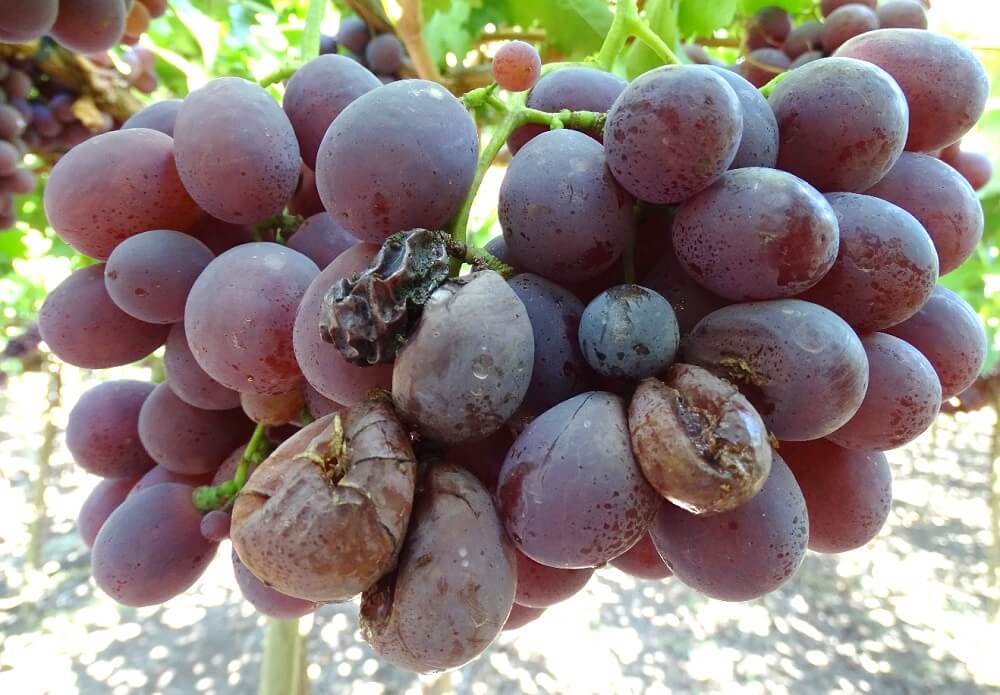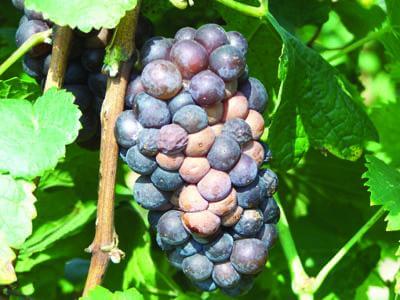
Vid
How to recognize and combat acid rot in grapes
Acid Rot
Fungus, Bacteria Or Insect
Type:
Risk to the plant:
CRITICAL
Fungi, Bacteria And Insects
Pathogen:

Manchas
WHO CAUSES IT?
Acid rot in grapevines is caused by a complex interaction between fungi, bacteria and insects. Fungi, especially species such as Aspergillus and Penicillium, and acetic bacteria such as *Acetobacter* and *Gluconobacter*, play a fundamental role in the decomposition of fruits. Insects, such as the vinegar fly (*Drosophila melanogaster*), facilitate the spread of the pathogen by creating wounds in the grapes, allowing the entry of these microorganisms. Fungi and bacteria feed on the sugars present in ripe grapes, causing fermentation and the release of acids that accelerate decomposition. This process generally begins in conditions of high humidity and warm temperatures, when the grapes are close to maturity, and vectors such as insects are most active.
SYMPTOMS
Acid rot severely affects the vine, damaging the clusters and significantly reducing the yield and quality of the harvest. Infected grapes begin to show signs of decay, with a dark color, a soft texture and a characteristic vinegar smell due to acetic fermentation. This damage not only affects the appearance and flavor of the grapes, but also makes them unsuitable for winemaking.
- Grapes with brown or black Taches.
- Strong vinegar smell.
- Soft and wrinkled fruits.
- Spill of fermented grape juice.
- Massive loss of clusters due to decomposition.


DEVELOPMENT CONDITIONS
Temperature:
20-35°C
Humidity:
85-100%
HOW IS IT SPREAD?
Insects, wounds on fruits, contact between grapes, rain, wind
HOW TO ELIMINATE IT?
Home treatments
There are no home treatments
Natural allies
Chemical treatments
There are no treatments for this disease. Treatments are directed at the insect vectors that transmit it. See insect treatments.
RECOMMENDED PRODUCTS TO ELIMINATE THE PEST
Sponsored link
Sponsored link
Sponsored link
Sponsored link
Sponsored link
Sponsored link
Sponsored link
Sponsored link
Sponsored link
Effective against all types of fungi
Sponsored link
Sponsored link
Sponsored link
Sponsored link
Sponsored link
Sponsored link
Sponsored link
PLANTAS REPELENTES
RECOMMENDATIONS
















































